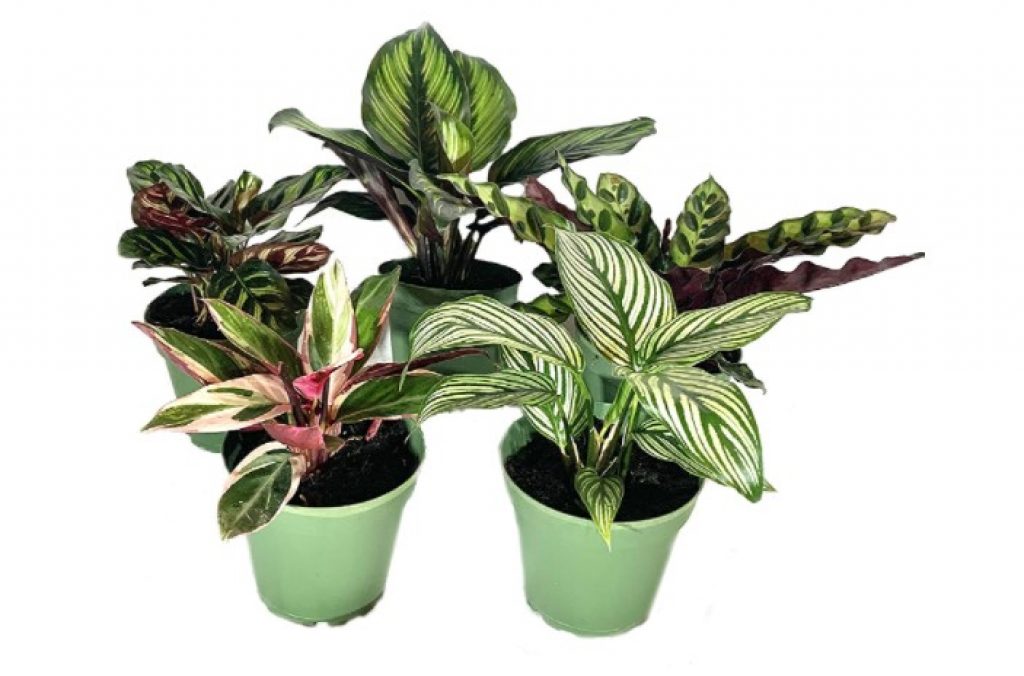Calatheas or genus Calathea (Goeppertia) is a genus name over 300 plant species in or arrowroot family Marantaceae native to America’s tropical regions. Their decorative leaves and colorful inflorescences (which some species have) make them popular house pot plants.
Besides the Calathea, the other houseplants in the family Marantaceae, grown as houseplants, are genera Stromanthe, Maranta, and Ctenanthe.

Finally, all ornamentals in the family Marantaceae are known as prayer plants because leaves fold up (raise) during evenings as if they were praying
Are calatheas cat-friendly?
If you love these houseplants, you should be glad to know that calatheas are safe for cats, i.e., all species and cultivars including Calathea orbifolia, Calathea medallion, Calathea rufibarba, Calathea ornata, Calathea lancifolia (Rattlesnake plant), C. makoyana (peacock plants), are all safe to your cats as well as dogs and horses.
They join other cat-friendly houseplants such as African violets, spider plants, wax plants, moth orchids, money tree, polka dot plant, lipstick plant, Echeveria glauca, aluminum plant, Boston ferns, true palms like parlor, areca, ponytail, among others. You don’t have to miss a houseplant just because you have cats or other pets.
Growing them
As tropical plants grow in partly shaded places, they thrive best under low to medium light, which makes them perfect indoor plants. Therefore, ensure you don’t expose them to an excessive amount of direct sunlight as it will make the leaves dull and may get scorched or sunburnt.
Like most tropical plants, you expect these houseplants to grow in places that are high in humidity (mist them regularly if you live in drier areas or invest in a humidifier).
Also, keep their soil moist but not very wet as it can make their leaves to be brown, and the soil should be well-drained and porous to avoid root rot as it will kill the plant.
Furthermore, for them to grow correctly, they need temperatures at least 60° F / 15°C, and depending on the specific cultivars, most will grow up to three feet high, and they do so slowly.
Finally, as susceptible plants, they are not the easiest ones to grow, and their propagation needs division and not by cuttings like other Pothos and Philodendrons.
Popular cultivars
Since Calatheas are not poisonous to cats, let us list some cultivars and species. Some of these cultivars include the following:
- Beauty star
- Corona
- Dottie
- Eclipse
- Freddie
- Medallion
- Mistro
- Network
- Pinstripe
- Round leaf
- Rattlesnake plant
- Rosey
- jungle velvet
- Eternal flame
- Sanderiana
- Zebra
Plants to avoid
If you have cats or even dogs, there are house plants you should because they are not safe, and they include aloe vera,
